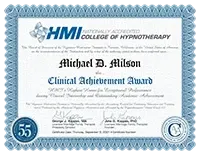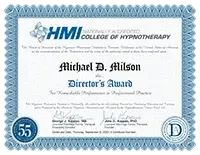
What’s Your Body Trying to Tell You? All About Body Syndromes
Body Syndromes
Many people experience symptoms that are considered psychosomatic, that is, the physical symptom someone is experiencing arises from an emotional or psychological cause. Commonly these symptoms may include things like headaches, fatigue, and sleep problems, as well as things like stomach issues and a wide assortment of unexplained pains throughout the body. It’s also possible that weight loss/gain could have a psychological origin for a variety of different reasons as well. That being said, if you should experience any of these issues, your first port of call should always be your medical doctor to rule out any potential medical causes. After your doctor has ruled out all possible medical causes and you’re still experiencing the problem, there’s a good chance that your issue could be resolved by exploring the possible psychological or emotional causes, the psychosomatic symptoms.
I was first introduced to the concept of Body Syndromes by Marc Gravelle during my time at HMI. Dr. John Kappas P.hD created the basic theory of Body Syndromes as described below and as shown in the accompanying infographic. Sigmund Freud’s work about “Hysterical Conversions” was one of the first writings on Body Syndromes. Freud noticed that people would convert their strong emotions, or hysteria into physical symptoms/conditions. The Body Syndrome Theory draws on the eastern philosophical and medical theory of “Chakras”, or energy centers, taken from the Sanskrit word for wheel.
The basic concept of a Body Syndrome is that of an emotional trauma manifesting itself physically somewhere within the body. When you hold in or repress an emotion, rather than processing and releasing it, the emotion will begin to express itself as physical discomfort. This discomfort, if prolonged, may, over time, turn into diseases, such as IBS, ulcers, and other “stress-related” diseases that are the focus of modern medicine. Certain emotions are more likely to be settled in predestined areas of the body.
There are 5 basic Body Syndromes:
Crying Syndrome
Responsibility Syndrome
Sexual Frustration or Guilt Syndrome
Fight or Reaching Syndrome
Flight Syndrome
The mechanism whereby emotions become manifest in the body is the nervous system. Emotions travel along the nervous system as electrical impulses that end up in areas of soft tissue. The frequency, duration, and intensity of these emotions affect the cells in either a positive or negative way, contributing to health or illness in the person.
Crying Syndrome
The area from the solar plexus up through the neck and head is called “The Crying Syndrome” because when someone is in this state, his or her eyes tend to crystallize. The manifestation of this syndrome typically indicates an issue related to decision making, the need to make a decision you’re not happy with or just the inability to make a decision. It could also be related to someone suppressing the need to express themselves verbally.
Physical areas/organs that are indicated in this syndrome include:
Pancreas, thymus and thyroid glands, diaphragm, lungs, heart, brain, eyes, ears, and sinus.
Physiological illnesses manifesting from this syndrome are:
Asthma, arthritis, sore throat, hypoglycemia, white cell disfunction eg., lymphoma, metabolic dysfunction, cataracts, ear infections.
Responsibility Syndrome
This syndrome covers the area of the upper back, including the upper spine, and shoulders. I’m sure you’ve heard the saying “Carrying the weight of the world on your shoulders” or similar.
Physical areas/organs that are indicated in this syndrome include:
Trapezoid and related muscles, shoulder blades or scapula, collarbone and upper ribs.
Physiological illnesses that manifest from this syndrome are:
Thoracic spinal scoliosis, muscular tightness or spasm, upper spinal subluxations.
Guilt/Sexual Frustration Syndrome
The area covered is the area from the waist to the base of the hips. Problems in this area can indicate guilt about anything, or relationship or sexual problems. Sexual frustration can relate to relationship problems as well as sexual abstinence or confusion.
Physical areas/organs that are indicated in this syndrome include:
Groin, hip or lower back areas, intestines, reproductive organs, adrenal glands.
Physiological illnesses that manifest from this syndrome are:
Lower back pain, IBS (Irritable Bowel Syndrome), constipation, irregular menses, anorgasmia, prostate or ejaculatory dysfunction.
Fight/Reaching Syndrome
The areas covered are the arms and hands. This syndrome can manifest from feeling the need to defend oneself, to fight off people or situations. If it is Reaching Syndrome, the client is metaphorically “reaching” for something that is currently out of his or her reach, or unobtainable.
Left brain / Right side of the body – logical and financial functions.
Right brain / Left side of the body – creative and relationship functions.
Physiological illnesses manifesting from this syndrome are:
Warts, blisters, arthritis, and rheumatism, nail biting or skin complaints on the hands or arms.
Flight Syndrome
The involved areas are the legs and feet. Here the client is running away from a problem or fear or situation.
Physical areas/organs that are indicated in this syndrome include:
Muscular/skeletal structure of the legs and feet, circulatory or nervous system of the legs and/or feet.
Physiological illnesses manifested by this syndrome are:
Planters warts, bunions, hammer toes, varicose veins, and shin splints.
Side Note: More than one of the above syndromes may occur at once and the syndromes may be related to past or present situations.
Disclaimer: The above information is given as educational material only and is not intended as medical advice. Michael is not a medical doctor and does not offer medical or psychological advice. For all physical problems you may be experiencing, you should first consult with a medical doctor. If your problem has a possible medical etiology, a referral will be required by your doctor before we can work on the problem with hypnosis.




